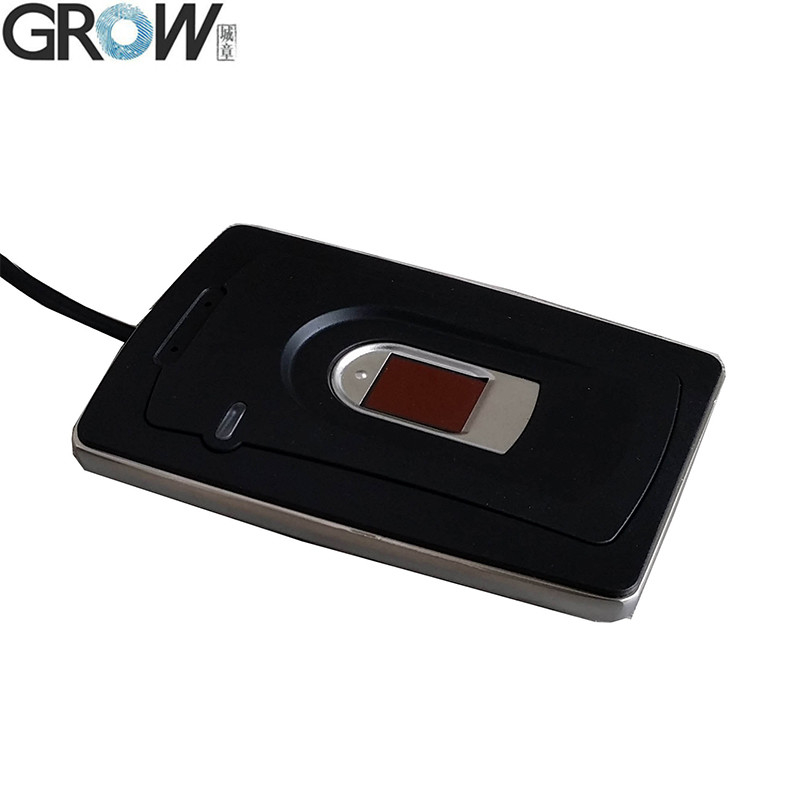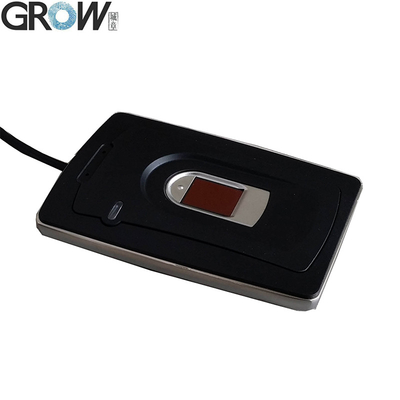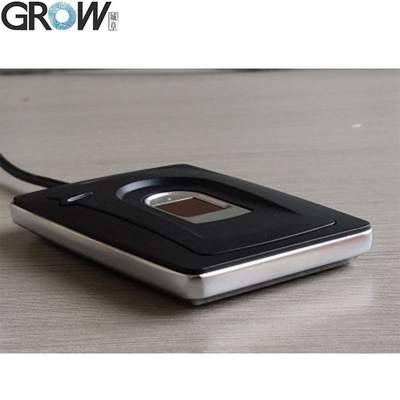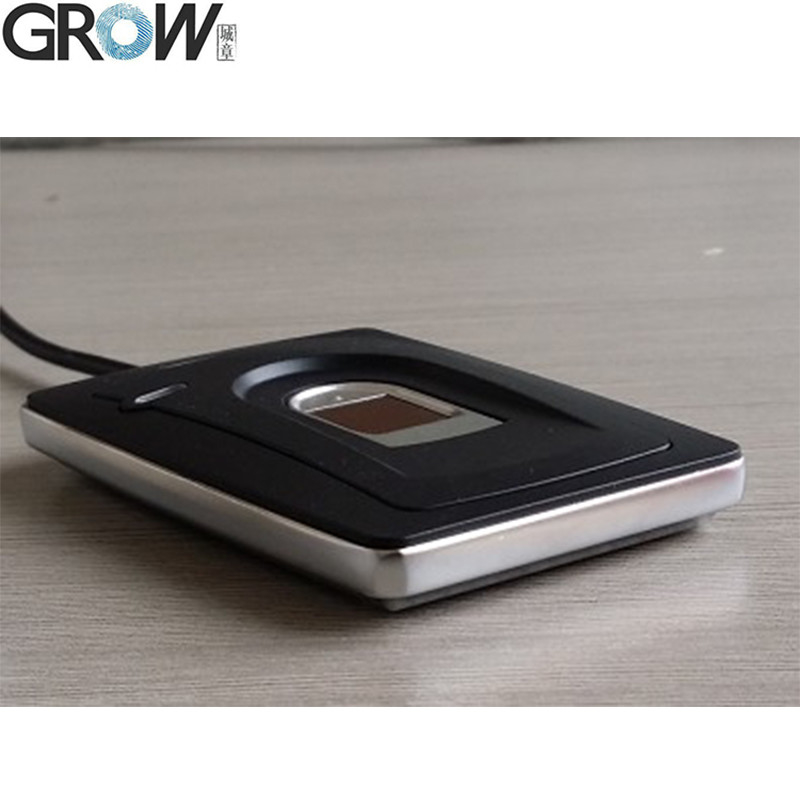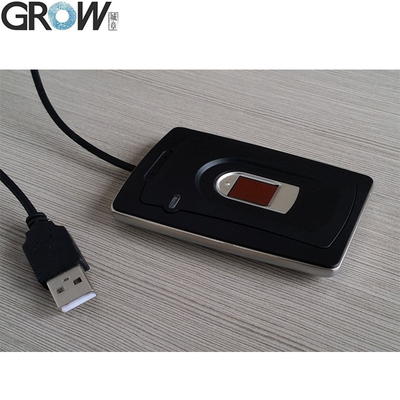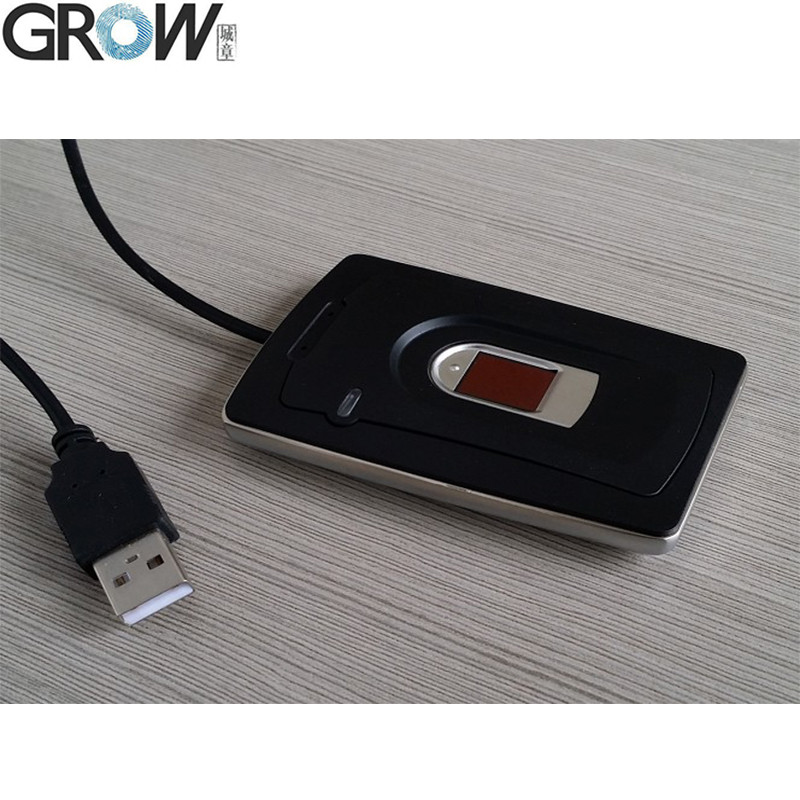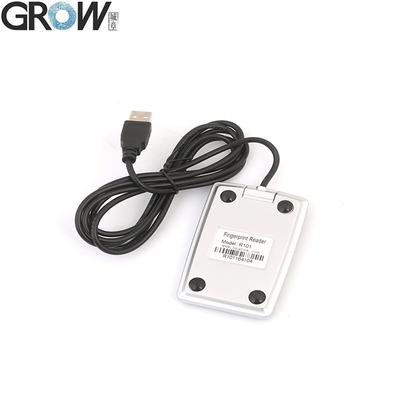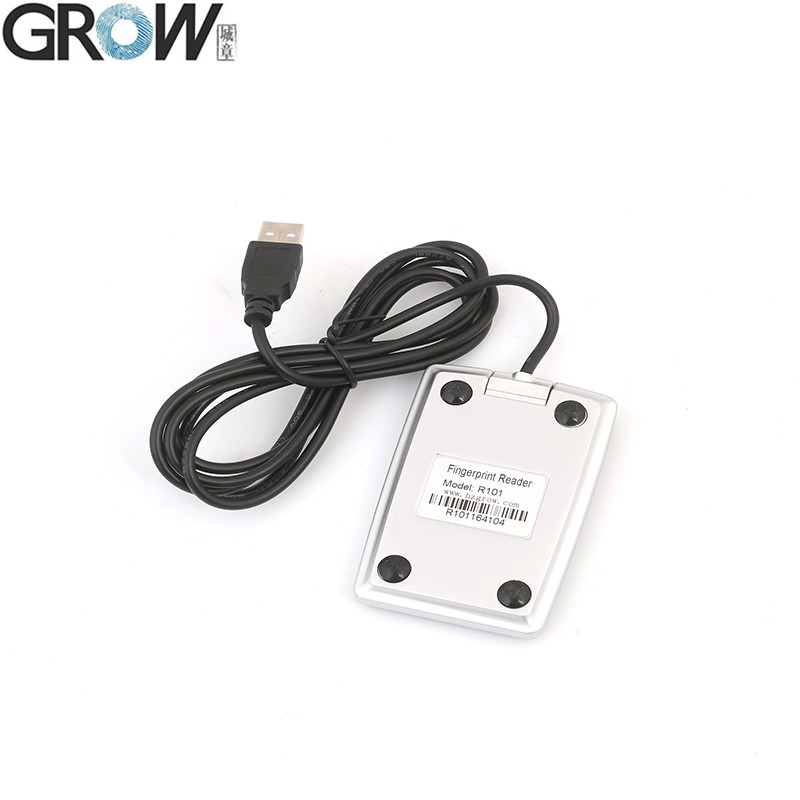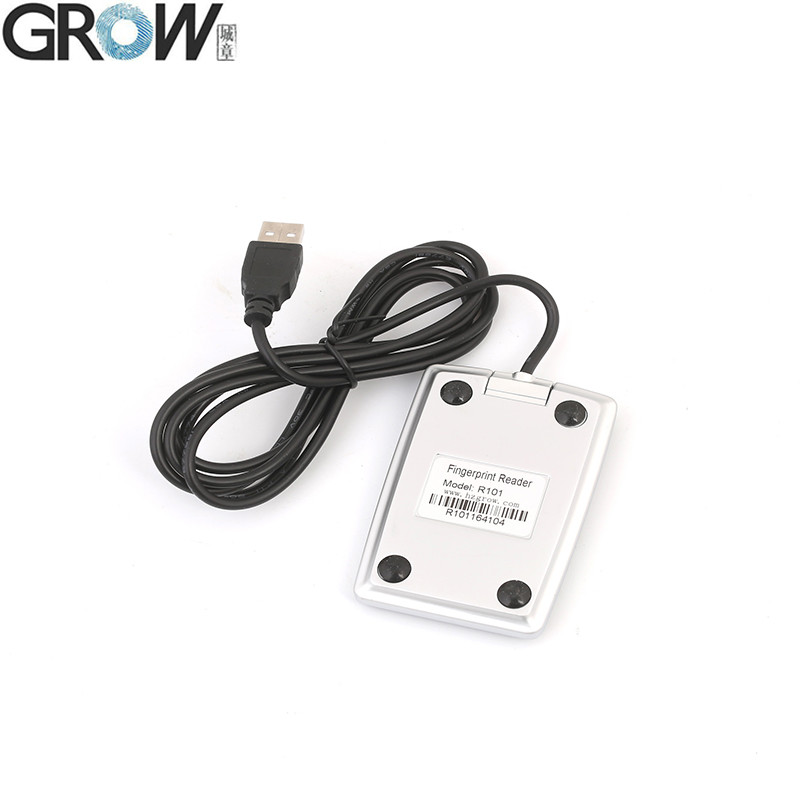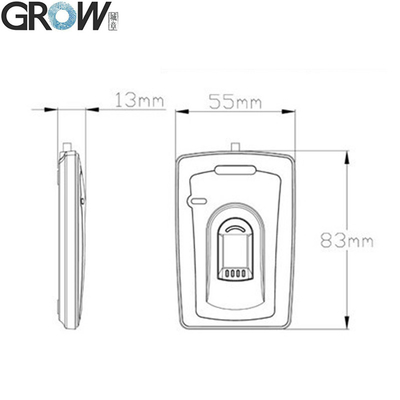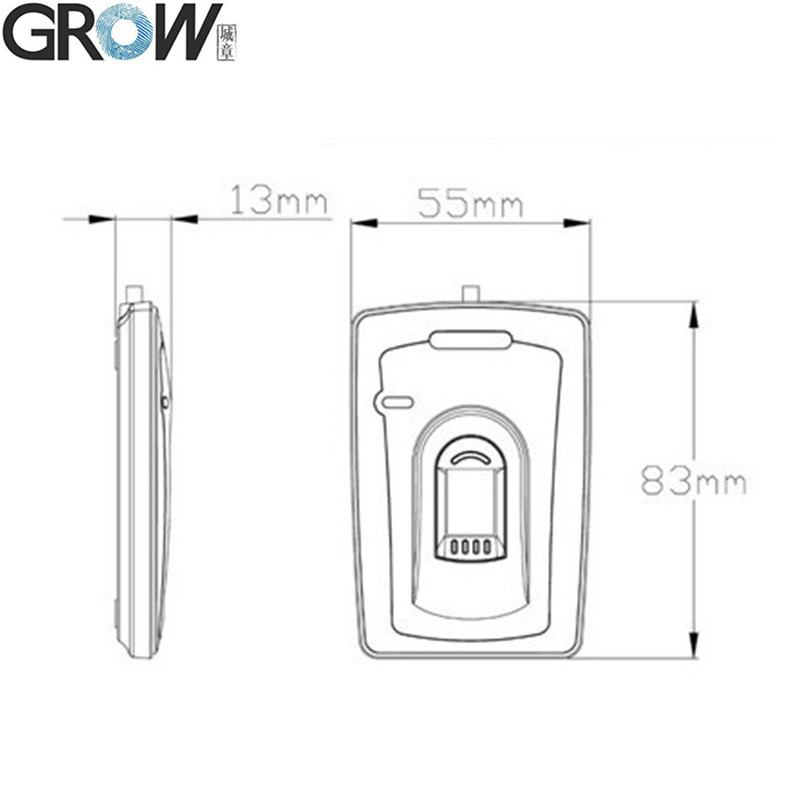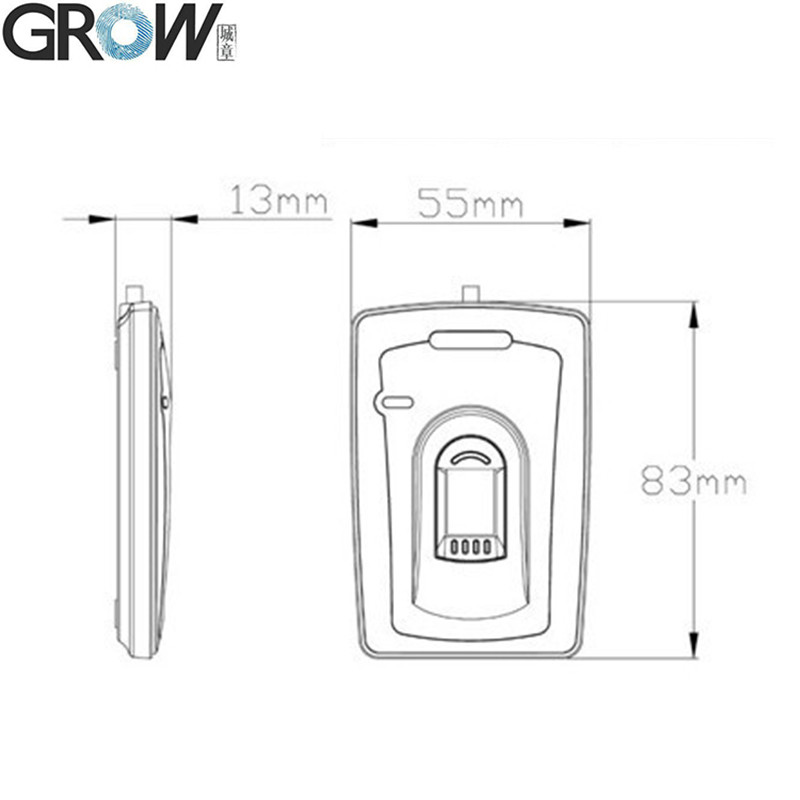
Description
R101N Capacitive USB Fingerprint Reader
R101N's fingerprint collecting chip is FPC1011F3 which is the best one.
Material:Zinc alloy pedestal
The thickness is only 1.3 cm! R101N outstandingly features self-learning function. During the fingerprint verification process,the latest collected fingerprint features would be integrated into the fingerprint database automatically so that the users would obtain better and better fingerprint verification result. ·High performance fingerprint reader for precise authentication with PC or network security
·Excellent adaption for dry, wet, harsh fingerprint
·USB interface for high speed communication
·Windows98,Me,NT4.0,2000,XP,Vista WIN7,Android support
·Outstanding authentication performance combined with SDK
·Adopts zinc alloy and well protect the fingerprint sensor
·High speed fingerprint identification algorithm engine
·Self study function
·Fingerprint feature data read/write functions
·Get Feature Data of Captured fingerprint and Verify/Identify Downloaded Feature with Captured fingerprint
·Identify Downloaded Feature with Captured fingerprint
·Security Level setting
Specifications
·Interface: USB
·Dimension (L*W*H): 83*55*13 mm
·Fingerprint capacity: 1000
·Resolution: 363 DPI
·Voltage: 5V
·Scanning Speed: < 0.2 second
·Verification Speed: < 0.3 second
·Matching Method: 1:1; 1 :N
·FRR (False Rejection Ratio): ≤0.01%
·FAR (False Acceptance Ratio): ≤0.0001%
·Antistatic capacity: 15KV
·Abrasive resistance intensity: 1 million times
·Work environment: -25°C ---55°C
·Work Humidity: 10-90%
Files
·Support Windows98,Me,NT4.0,2000,XP,Vista WIN7,Android
·Provide Free SDK Files
What makes fingerprints the most popular way of biometric recognition?
Fingerprint, as a type of biometric technology, has long received widespread attention and application, becoming the most popular among many identity verification methods. This phenomenon is not accidental, but is determined by the unique characteristics of fingerprints, the maturity of technology, and its excellent balance between security and convenience.
Firstly, the uniqueness of fingerprints is the basis for their widespread adoption. Everyone's fingerprint is unique, even identical twins have subtle differences in their fingerprints. This uniqueness ensures the high reliability of fingerprints as identity identifiers. The detailed features on fingerprints, such as the arrangement, branching, and endpoint of the ridges (i.e. the raised parts on the fingerprint), form complex patterns. The complexity and uniqueness of these patterns make fingerprints a difficult means of identity recognition to replicate.
Secondly, the technology of fingerprint recognition has become quite mature. With the advancement of technology, fingerprint recognition technology has developed from early optical recognition to various technologies such as capacitive and ultrasonic, with significant improvements in accuracy and recognition speed. Optical fingerprint recognition uses light to illuminate the surface of the fingerprint and capture the image formed by the reflected light for comparison; Capacitive and ultrasonic fingerprint recognition are more advanced. The former identifies by detecting small capacitance changes on the fingerprint surface, while the latter uses ultrasonic waves to penetrate the fingerprint surface and obtain more detailed subcutaneous structure information, further improving the security and accuracy of recognition. The development of these technologies has made fingerprint recognition not only applicable to static scenarios such as access control systems and mobile unlocking, but also to dynamic scenarios such as live fingerprint recognition, effectively preventing the risk of fingerprint forgery or theft.
Furthermore, the convenience of fingerprint recognition is also an important reason for its popularity. Compared to other biometric technologies such as iris recognition and facial recognition, fingerprint recognition is more intuitive and simple for users. Users only need to gently place their fingers on the recognition device to complete the verification, without additional coordination or complex operations, making it very suitable for use in fast-paced living and working environments. In addition, as a part of the human body, fingerprints do not require additional identification tools, greatly improving the convenience of use.
Finally, the cost-effectiveness of fingerprint recognition is also a key factor in its popularity. With the advancement of technology and the expansion of the market, the cost of fingerprint recognition systems has gradually decreased, making this technology widely applicable in various scenarios, from small consumer electronics products to large security systems, where fingerprint recognition can be seen. This wide applicability not only promotes the further development of fingerprint recognition technology, but also deepens the public's acceptance and trust in this technology.
In summary, the reason why fingerprints have become the most popular biometric method is because they have multiple advantages such as uniqueness, technological maturity, convenience, and cost-effectiveness. These characteristics make fingerprint recognition not only meet the modern society's demand for secure, efficient, and convenient identity verification, but also become a bridge connecting the digital world with real life, bringing great convenience to people's lives and work. With the continuous advancement of technology, we have reason to believe that fingerprint recognition technology will continue to play an important role in the future, contributing to the construction of a more secure and intelligent social environment.

 Your message must be between 20-3,000 characters!
Your message must be between 20-3,000 characters! Please check your E-mail!
Please check your E-mail!  Your message must be between 20-3,000 characters!
Your message must be between 20-3,000 characters! Please check your E-mail!
Please check your E-mail! 

